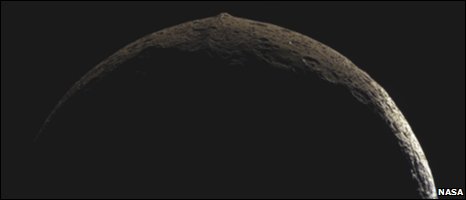3
3488
Guest
<p>[QUOTE<font color="#ff0000">]Thanks. Yes, very fascinating and a good link with maps. <br /> Posted by silylene</font>[/QUOTE]</p><p><strong><font size="2" color="#000000">It is indeed silylene.</font></strong></p><p><strong><font size="2" color="#000000">Iapetus is certainly one of the more interesting of the Saturn moons, with Titan, Enceladus & Dione & is in fact one of the more interesting bodies of the entire solar system. </font></strong></p><p><strong><font size="2" color="#000000">These maps really show how the mountain belt, really does follow the equator & the bright / dark terrain is 50 / 50. This suggests to me that Iapetus has kept the same side facing Saturn for most, if not all of it's existence. </font></strong></p><p><strong><font size="2" color="#000000">Cratering generally appears uniform, in spite of the albedo differnence & apart from the enormous mountain belt, there appears that little has taken place, thus a treasure trove of data regarding the outer part of the Saturn system.</font></strong></p><p><strong><font size="2" color="#000000">No evidence of cryovolcanism, but that mountain belt, still seems to me as if something unique has happened here. Perhaps deoribited rings? Seems more likely now, after the suspicion that Rhea may have it's own tenuous ring.</font></strong></p><p><strong><font size="2" color="#000000">Andrew Brown. </font></strong></p> <div class="Discussion_UserSignature"> <p><font color="#000080">"I suddenly noticed an anomaly to the left of Io, just off the rim of that world. It was extremely large with respect to the overall size of Io and crescent shaped. It seemed unbelievable that something that big had not been visible before".</font> <em><strong><font color="#000000">Linda Morabito </font></strong><font color="#800000">on discovering that the Jupiter moon Io was volcanically active. Friday 9th March 1979.</font></em></p><p><font size="1" color="#000080">http://www.launchphotography.com/</font><br /><br /><font size="1" color="#000080">http://anthmartian.googlepages.com/thisislandearth</font></p><p><font size="1" color="#000080">http://web.me.com/meridianijournal</font></p> </div>








